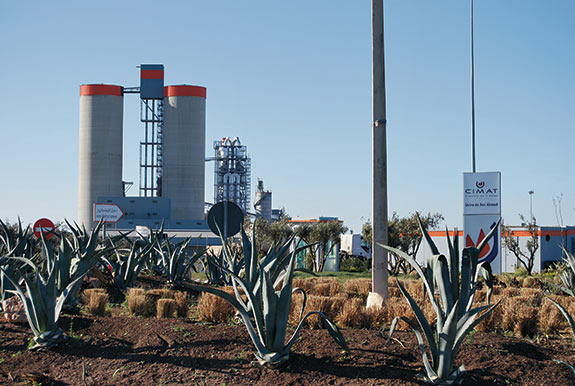Logistics Optimisation: Part One
Introduction
As well as the three global players, Lafarge, Holcim and Italcementi, Ciments de l’Atlas (CIMAT) is the largest indigenous cement manufacturer in Morocco. The company was formed in 2007 within the framework of an investment agreement between the founder Anas Sefrioui and the Moroccan government, in order to further develop the country’s construction sector on a long-term basis. The company has 226 employees in its two cement plants, Ben Ahmed and Béni Mellal, which achieved a combined revenue turnover of more than €180 million in 2012. The foundation was implemented in one phase when cement demand in Morocco rapidly increased as a result of numerous investments in infrastructure. This growth was still perceptible when CIMAT began production at Ben Ahmed in 2010, and in 2011 at Béni Mellal. Today, both plants have a capacity of 3.2 million tpa. With the total cement production capacity of the Moroccan market standing at 22.65 million tpa, this corresponds to a market share of approximately 15%.
Following the establishment of the two plants, it quickly became clear that the logistic processes could not be executed optimally without corresponding IT support. The database solution developed in-house had not grown to meet the challenges of everyday practice. The result: long waiting times for the trucks at the entrance to the facilities. Furthermore, the handling of further sequences, such as the weighing and loading, were anything but smooth running. Therefore, in 2012, the company decided to look for a corresponding IT system that would not only guarantee a better handling of all sequences in the works, with which a continuous improvement process could be structured, but could also provide the basis for a KPI system.

Ciments de l’Atlas' Ben Ahmed plant, Morocco.
Selecting an IT system
CIMAT attended CEMTECH at the end of 2012, at which FRITZ & MACZIOL was present as an exhibitor. “VAS convinced us because the system had matured functionally and could now be adapted in standard form with a high level of flexibility to our sequences in the works. Furthermore, VAS is an open system that can be integrated with other IT solutions at all times. Therefore, the decision in favour of the introduction of this IT logistics system was made as early as the spring of 2013 at both our locations in Morocco,” said Rachid Lahbara, Project Manager at Direction Performances et Investissements with Ciments de l’Atlas in Casablanca. FRITZ & MACZIOL had numerous reference installations in the Arab region, as well as a graphic user interface (GUI), which is also available in the French and Arabic languages – an important factor in the decision-making process.
Read Part Two of this article here.
Written by Sabine Maier, FRITZ & MACZIOL, and Rachid Lahbara, CIMAT. This is an abridged version of the full article, which appeared in the November 2014 issue of World Cement. Subscribers can view the full article by logging in.
Read the article online at: https://www.worldcement.com/africa-middle-east/04112014/logistics-optimisation-part-one-789/
You might also like
The World Cement Podcast - CleanTech & Venture Capital
Our guest for this episode of the World Cement Podcast is Alfredo Carrato, Venture Capital Advisor for CEMEX Ventures. Listen in to the conversation as World Cement's Senior Editor, David Bizley, and Alfredo discuss the role of venture capital and cleantech in enabling the cement industry's green transition.
Tune in to the World Cement Podcast on your favourite podcast app today.


